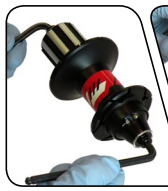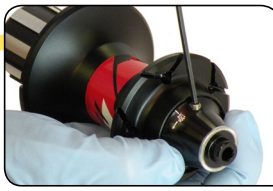I got a flat yesterday morning after a normal ride, walked my bike inside the house and propped it upside-down (like this) overnight. This morning, I changed the flat and put on some brand new tires I bought last week.
When I take it out for a ride, I find that the freewheel is nearly locked up! I can forcibly move it by dragging on the pedals and bunching-up the chain, but it's not easy. I've tried adjusting the tension on my quick-release, but that doesn't seem to make a difference.
The freewheel on my SRAM S27 has always been tight (to the point of putting some slack in the chain when back-pedaling), but now I can't even coast! How did this happen, and what should I do about it?
Edit - the next day:
I made my adjustments on Tuesday morning as I said in the comments, but after only a 15 mile ride the freehub was completely tightened back up again!
After looking into it a bit more carefully, I found a service manual for my wheels with some nice pictures. Here's what I adjusted on Tuesday morning:

I apparently loosened the "end cap" from the threading on the axle. Here's another pic of the whole assembly:

Unfortunately because it tightened right back up that obviously wasn't a very robust solution.

